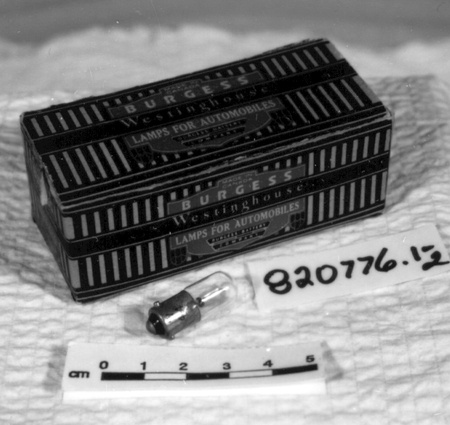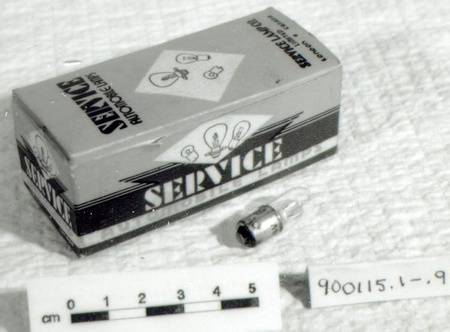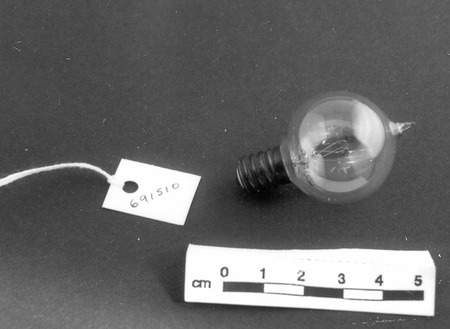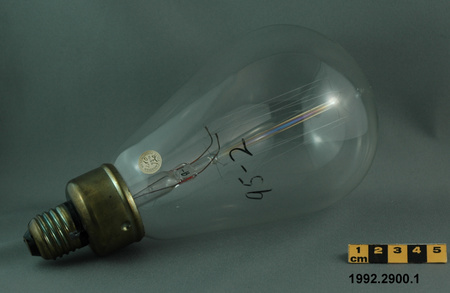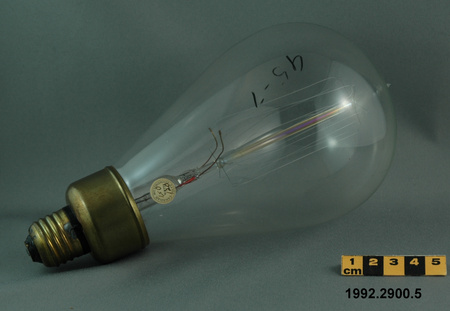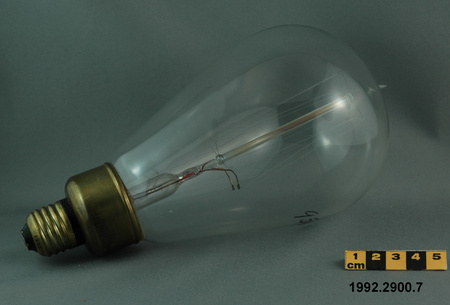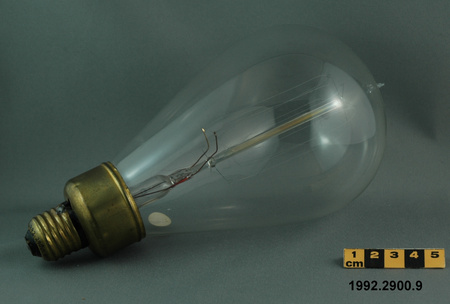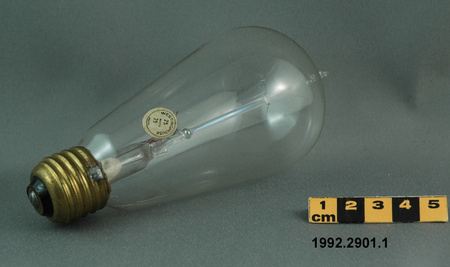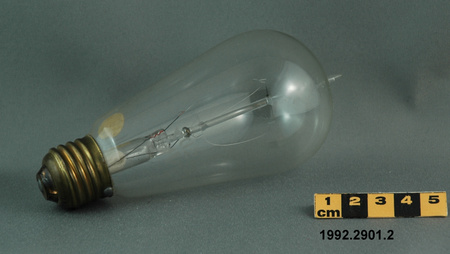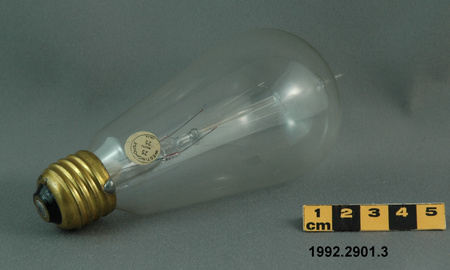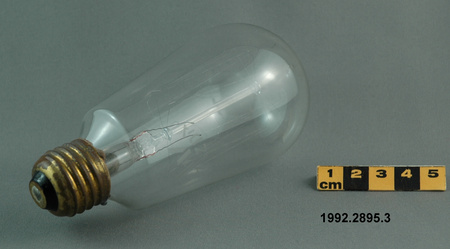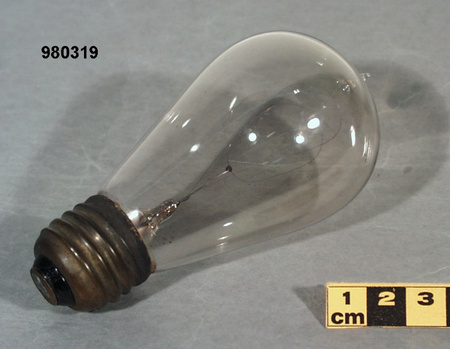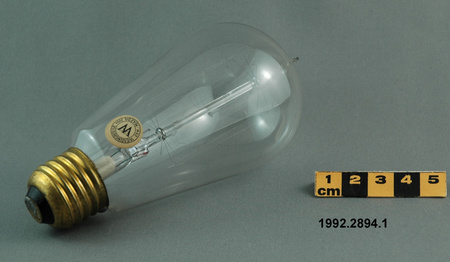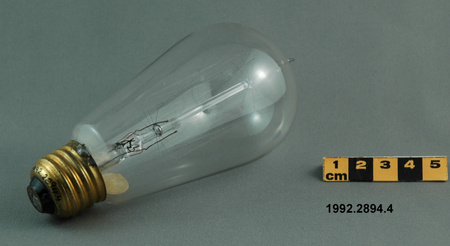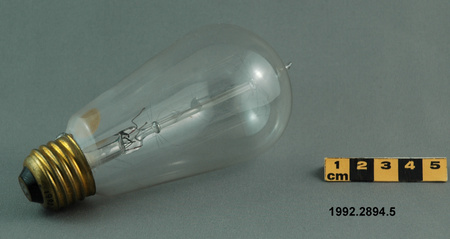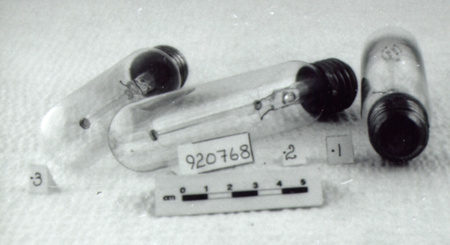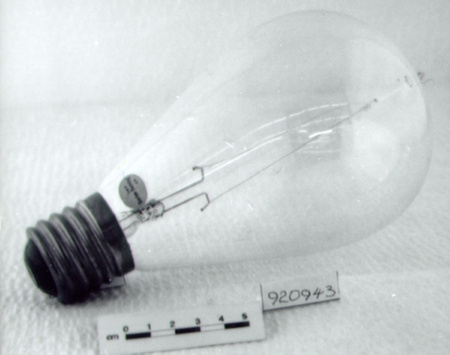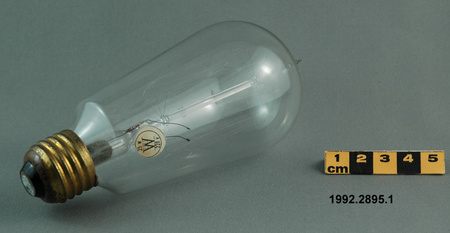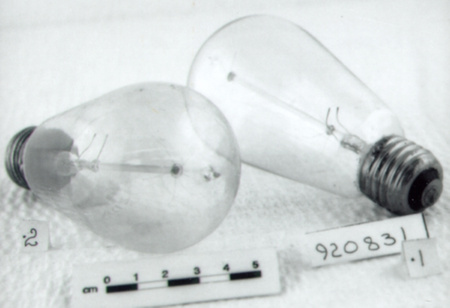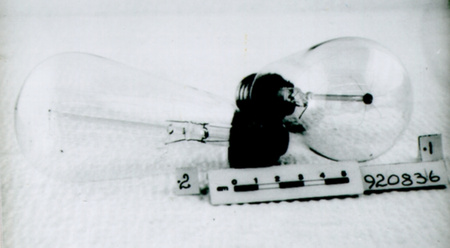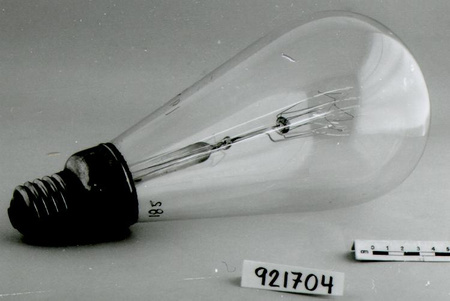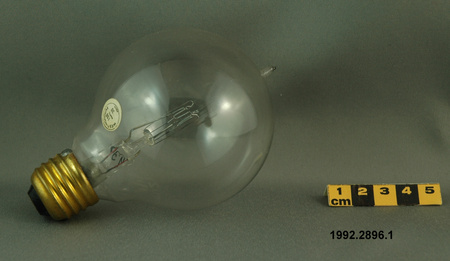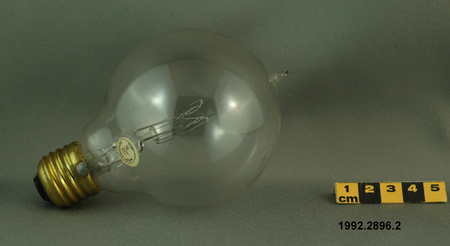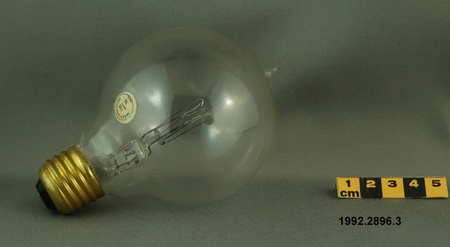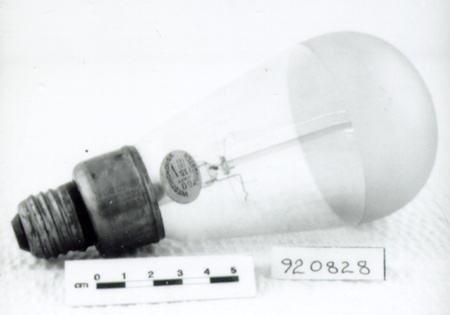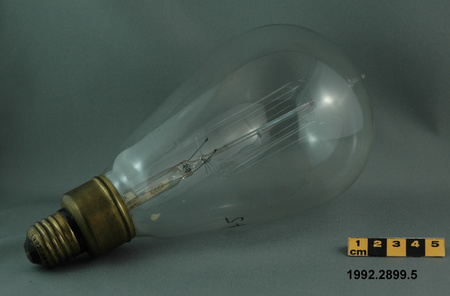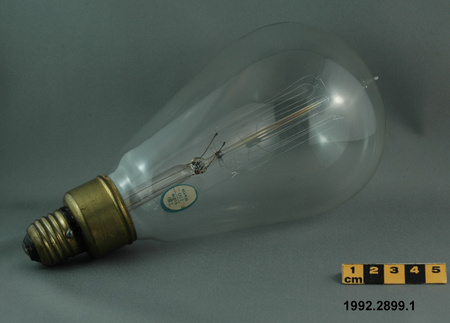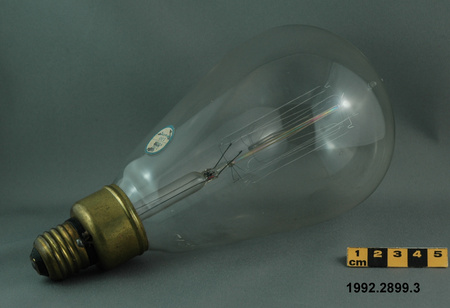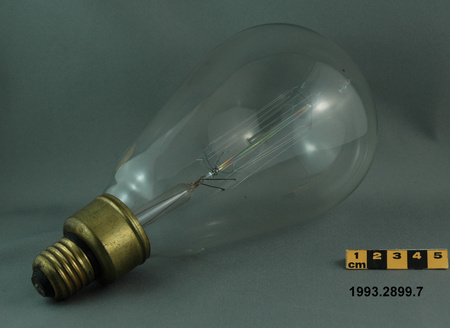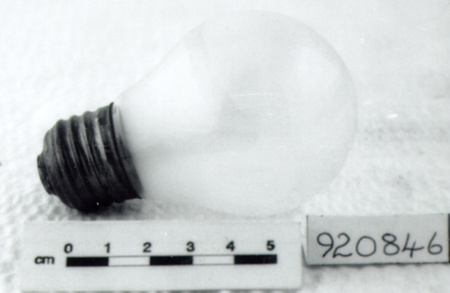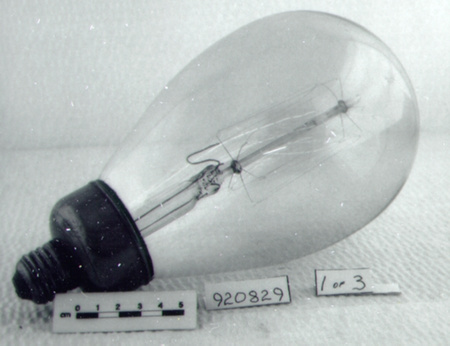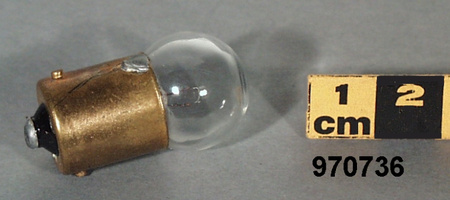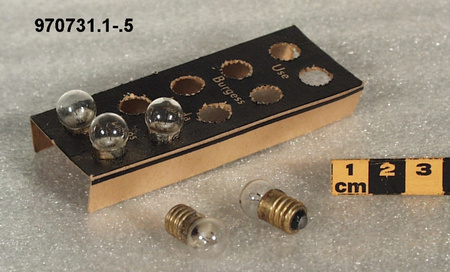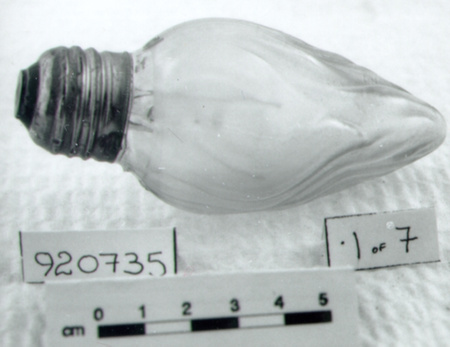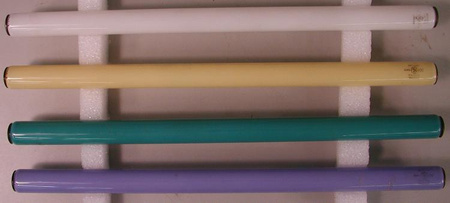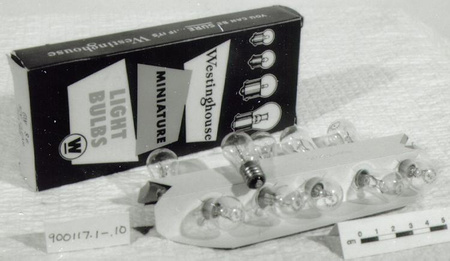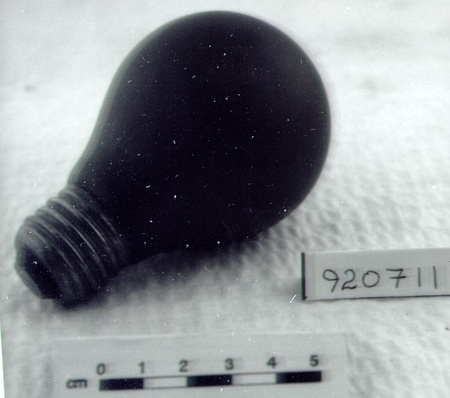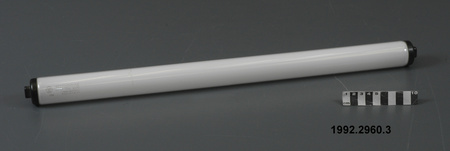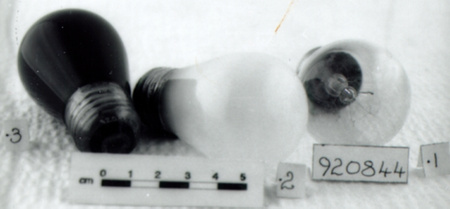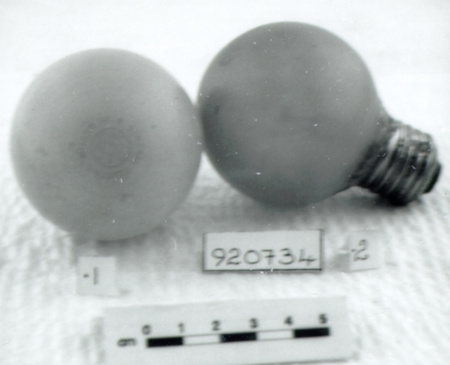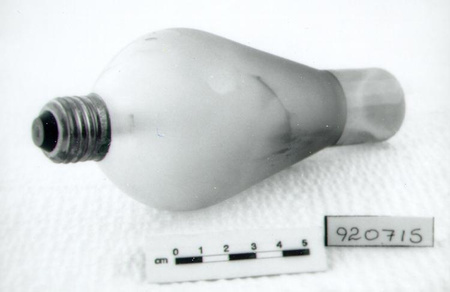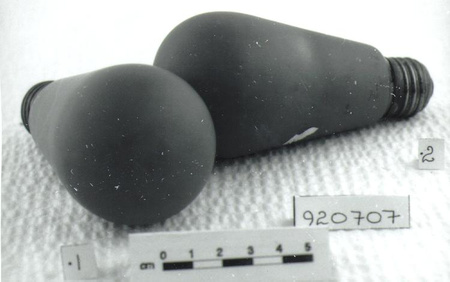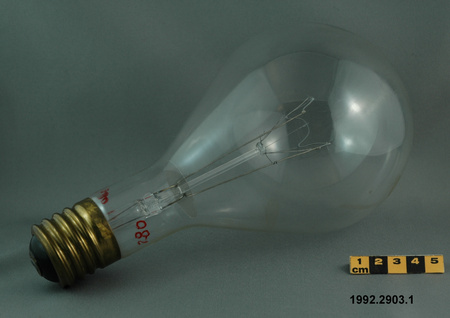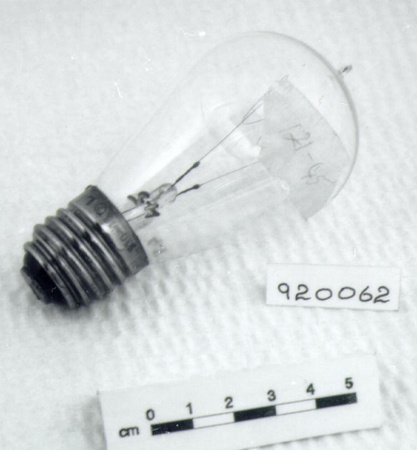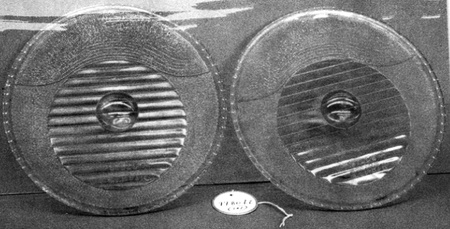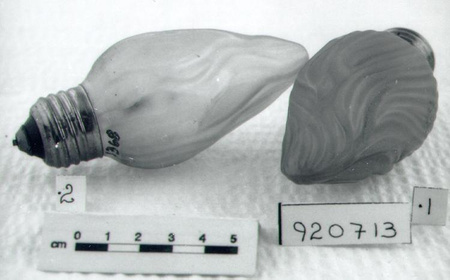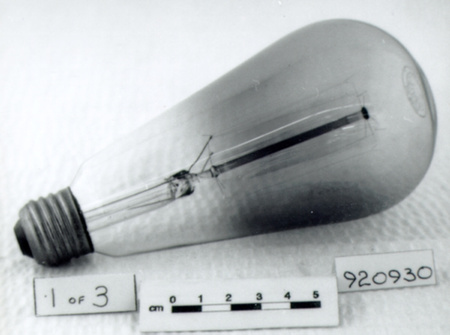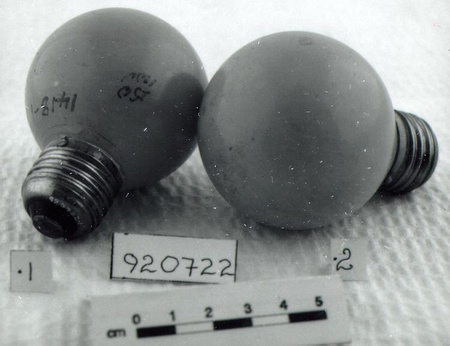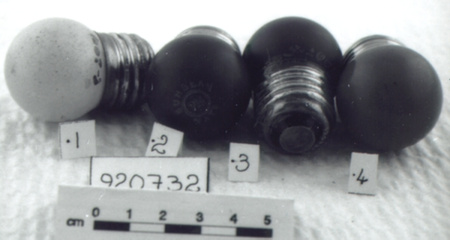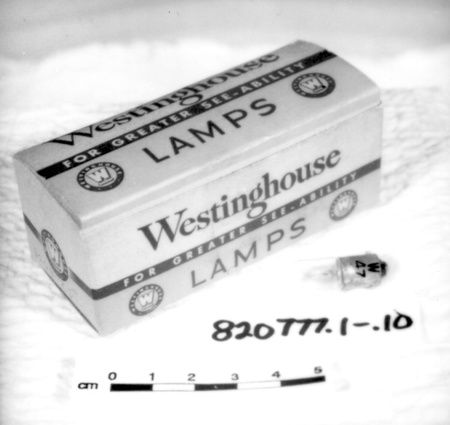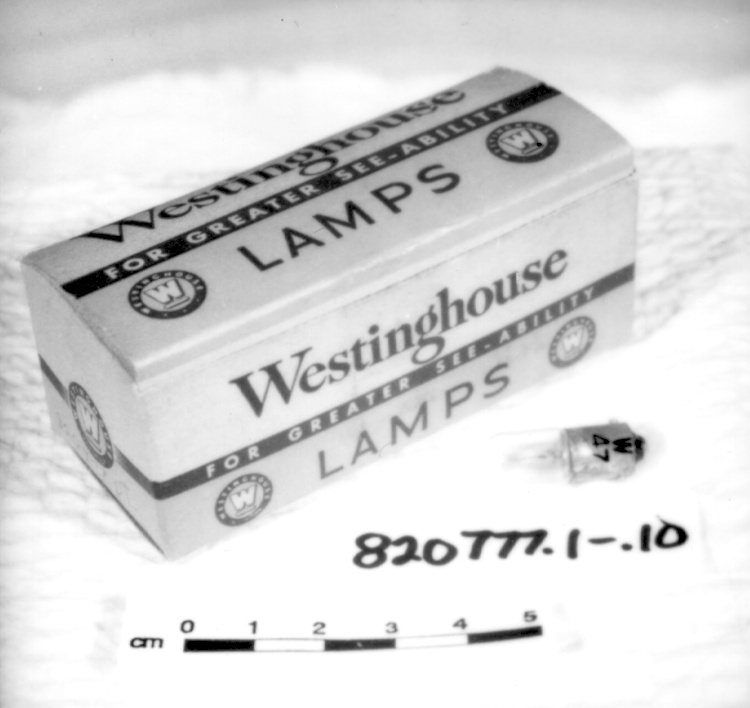Lampe à incandescence
Utiliser cette image
Puis-je réutiliser cette image sans autorisation? Oui
Les images sur le portail de la collection d’Ingenium ont la licence Creative Commons suivante :
Copyright Ingenium / CC BY-NC-ND (Attribution-NonCommercial 4.0 International (CC BY-NC 4.0)
ATTRIBUER CETTE IMAGE
Ingenium,
1982.0777.001
Permalien:
Ingenium diffuse cette image sous le cadre de licence Creative Commons et encourage son téléchargement et sa réutilisation à des fins non commerciales. Veuillez mentionner Ingenium et citer le numéro de l’artefact.
TÉLÉCHARGER L’IMAGEACHETER CETTE IMAGE
Cette image peut être utilisée gratuitement pour des fins non commerciales.
Pour un usage commercial, veuillez consulter nos frais de reproduction et communiquer avec nous pour acheter l’image.
- TYPE D’OBJET
- TUNGSTEN/VACUUM/TUBE/BAYONET
- DATE
- 1950–1959
- NUMÉRO DE L’ARTEFACT
- 1982.0777.001
- FABRICANT
- Canadian Westinghouse Co. Ltd.
- MODÈLE
- 47
- EMPLACEMENT
- Hamilton, Ontario, Canada
Plus d’information
Renseignements généraux
- Nº de série
- S/O
- Nº de partie
- 1
- Nombre total de parties
- 10
- Ou
- S/O
- Brevets
- S/O
- Description générale
- Glass & metal lamp/ cardstock box
Dimensions
Remarque : Cette information reflète la taille générale pour l’entreposage et ne représente pas nécessairement les véritables dimensions de l’objet.
- Longueur
- 2,7 cm
- Largeur
- 1,0 cm
- Hauteur
- S/O
- Épaisseur
- S/O
- Poids
- S/O
- Diamètre
- S/O
- Volume
- S/O
Lexique
- Groupe
- Technologie d'éclairage
- Catégorie
- Ampoules
- Sous-catégorie
- S/O
Fabricant
- Ou
- Westinghouse
- Pays
- Canada
- État/province
- Ontario
- Ville
- Hamilton
Contexte
- Pays
- Canada
- État/province
- Inconnu
- Période
- Probably 1950s & 1960s
- Canada
-
Made and used in Canada. - Fonction
-
A device used to illuminate radio panels in automobiles. - Technique
-
Tungsten is used in almost all incandescent light bulbs because it has a high melting temperature, making it conducive to producing visible light. In early light bulbs, the air was removed to create a vacuum to prevent combustion. However, as a result of the high temperature, tungsten atoms detach from the filament and cover the glass. The filament disintegrates over time and reduces the life of the bulb. Modern light bulbs are manufactured with inert gases, such as argon, which significantly reduces the loss of tungsten. Incandescent light bulbs produce the majority of their energy in the form of infrared light; approximately 10% of light is produced in the visible spectrum (Harris, "How Light Bulbs Work"). The light bulb was invented over a period of time by many inventors, however its invention is credited to Joseph Swan and Thomas Edison, who did similar work around 1878 and 1879 (Grabianowski, "10 Inventions that Changed the World"). - Notes sur la région
-
Inconnu
Détails
- Marques
- ON BULBS: 'W/ 47'/ PRINTING ON BOX INCLUDES: 'Westinghouse/ FOR GREATER SEE-ABILITY/ LAMPS/ The lamps contained herein are manufactured by/ CANADIAN WESTINGHOUSE CO. LIMITED/ HAMILTON, ONTARIO/ No. 47/ 6-8V O.15/ RADIO PANEL'/ HANDWRITTEN ON BOX: 'BOX/ $.10'
- Manque
- S/O
- Fini
- Beige box with orange & blue printing
- Décoration
- S/O
FAIRE RÉFÉRENCE À CET OBJET
Si vous souhaitez publier de l’information sur cet objet de collection, veuillez indiquer ce qui suit :
Canadian Westinghouse Co. Ltd., Lampe à incandescence, entre 1950–1959, Numéro de l'artefact 1982.0777, Ingenium - Musées des sciences et de l'innovation du Canada, http://collection.ingenium.ca/fr/id/1982.0777.001/
RÉTROACTION
Envoyer une question ou un commentaire sur cet artefact.
Plus comme ceci
